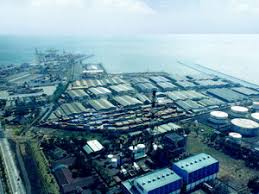Indonesia - Pelabuhan Tanjung Perak

Tanjung Perak Port, situated in Surabaya, East Java, stands as the second busiest port in Indonesia, playing a pivotal role in inter-island shipping for Eastern Indonesia. With a strategic location and comprehensive services, it handles diverse vessel types, including general cargo, bulk carriers, gas carriers, tankers, container vessels, Ro-Ro, and passenger vessels.
The port features six main terminals, catering to various cargo types. Services encompass conventional cargo handling, passenger facilities, RoRo services, and an international container terminal. Additional provisions include tugging, pilotage, bunker services, storage, and shipyard facilities. Since 2015, the Teluk Lamong Port Terminal has supported port activities.
Expansion and Modernization at Tanjung Perak Port
In 2014, the Teluk Lamong Green Sea Port, an extension of Tanjung Perak, commenced trial operations. Equipped with modern facilities, including Ship to Shore Crane units and Automated Stacking Crane units, it primarily serves international shipping, enhancing efficiency and reducing environmental impact. Plans for a dry bulk port are underway, expanding capacity and incorporating advanced logistics technology.
The Gapura Surya Nusantara, unveiled in 2014, serves as the new passenger terminal at Tanjung Perak. Designed with green architecture principles, it includes a passenger bridge, ticket counter, waiting lounge, and a food court. This three-floor terminal, covering 16,120 square meters, operates regular ship services to various Indonesian ports and serves as a terminal for international cruise ships.
Geographical Access and Connectivity at Tanjung Perak Port
Positioned strategically, the port is accessed from the north through the Madura Strait, a 25-mile channel between East Java and Madura Island. It benefits from its proximity to Juanda International Airport (10 km) and Surabaya City (6 – 8 km), facilitating seamless connectivity for efficient cargo handling.
With its continuous development and commitment to modernization, the port remains a vital hub for maritime trade in Eastern Indonesia.
